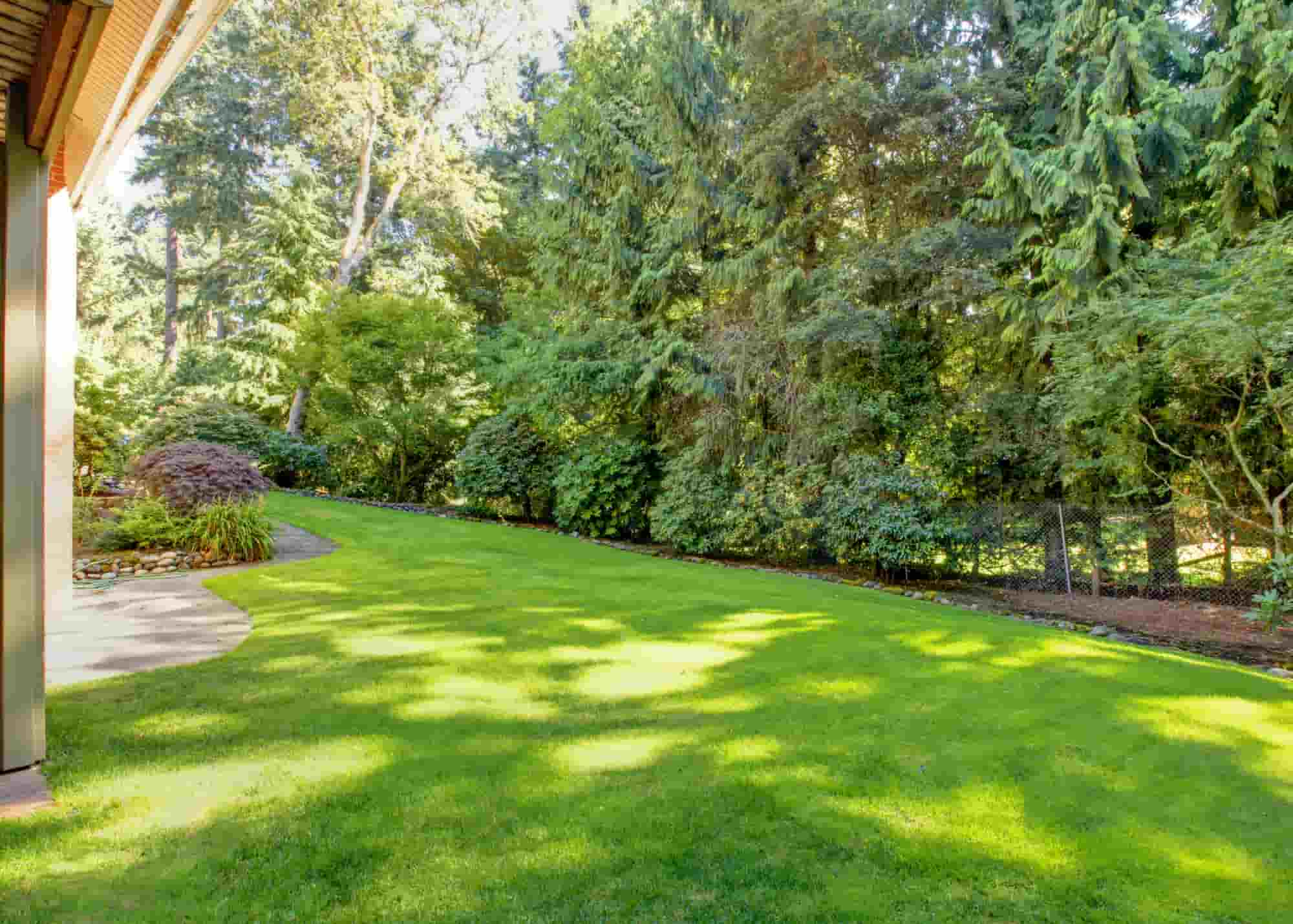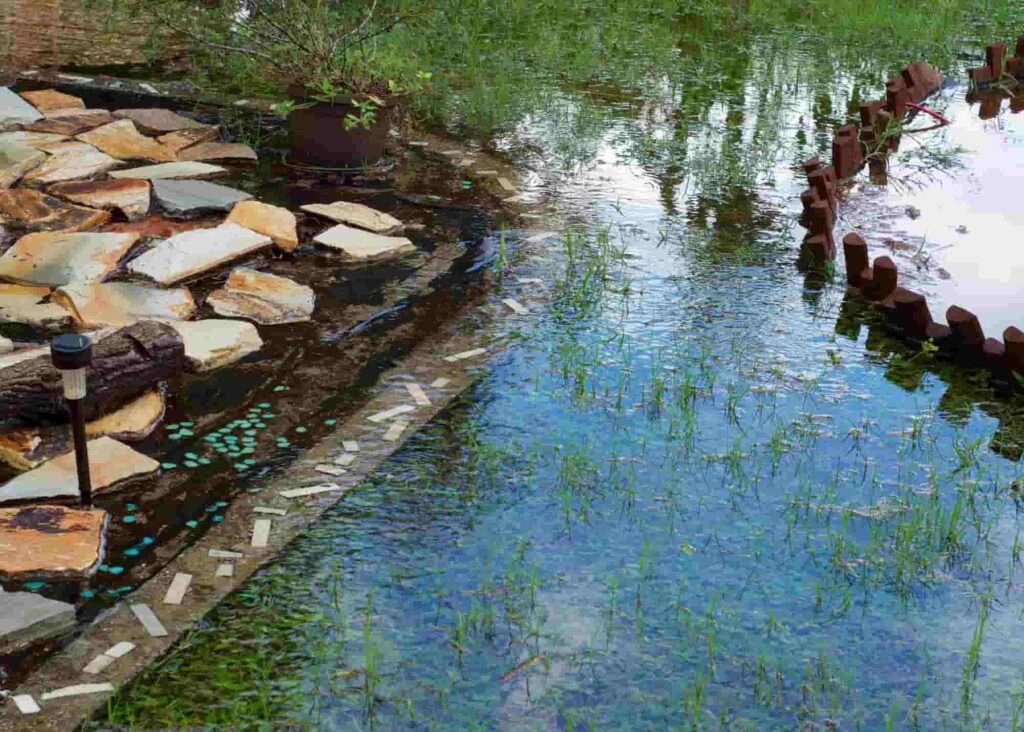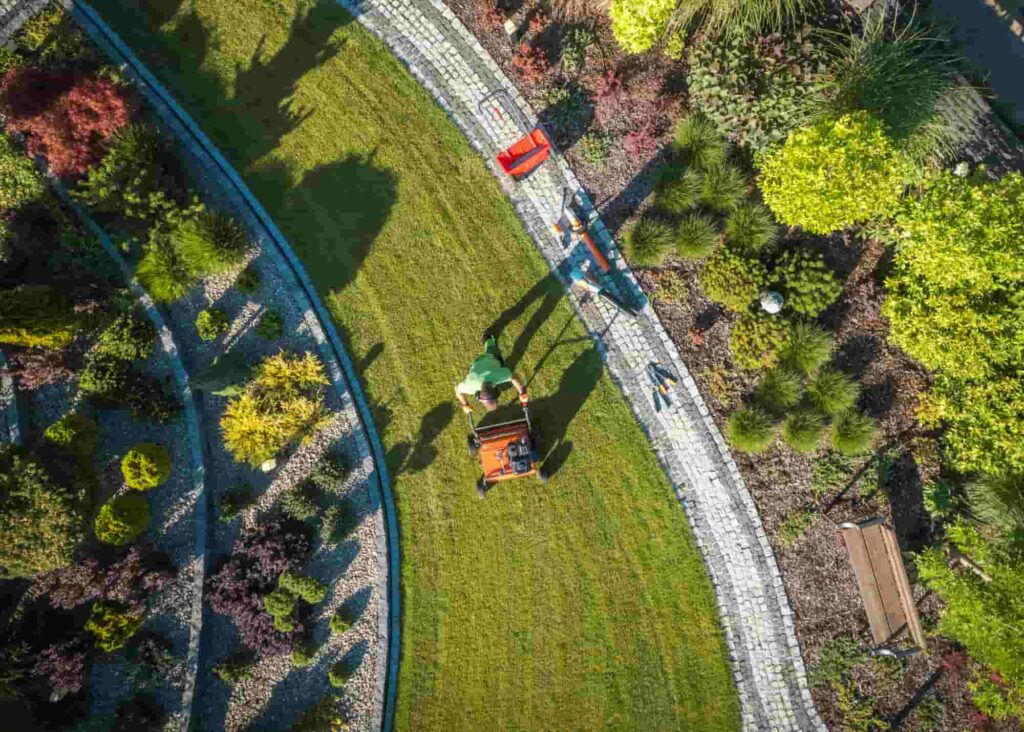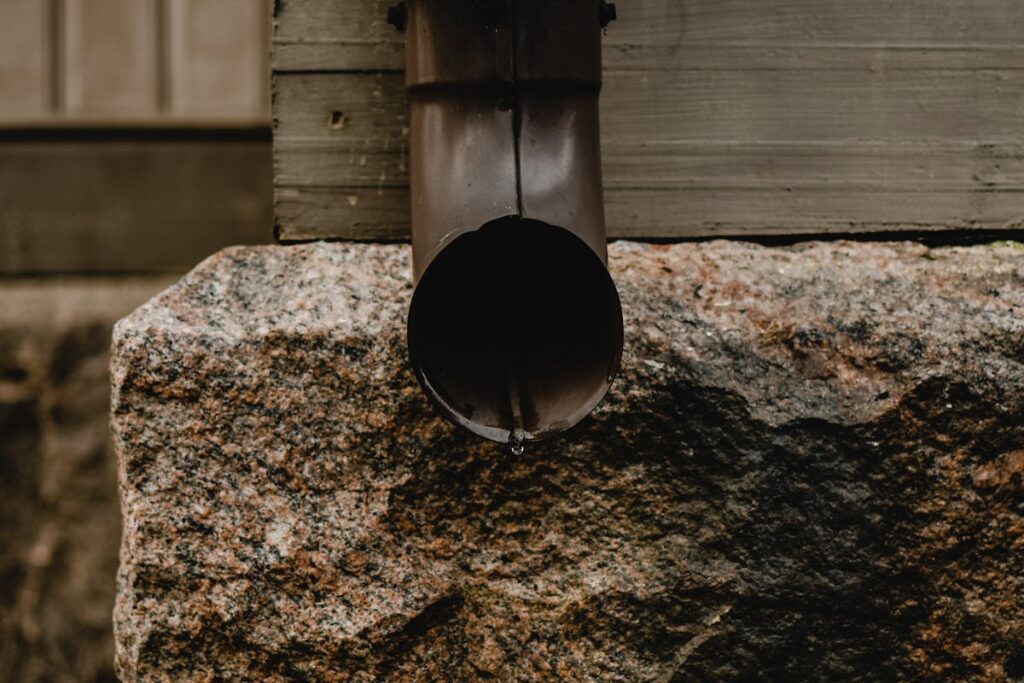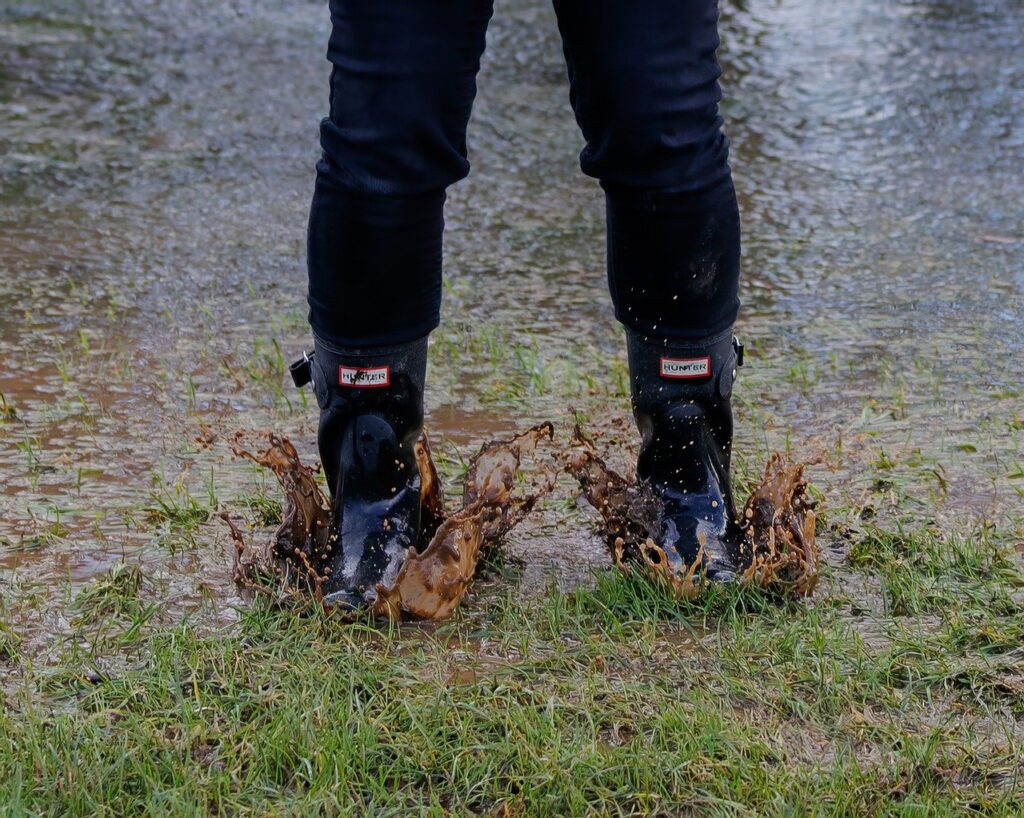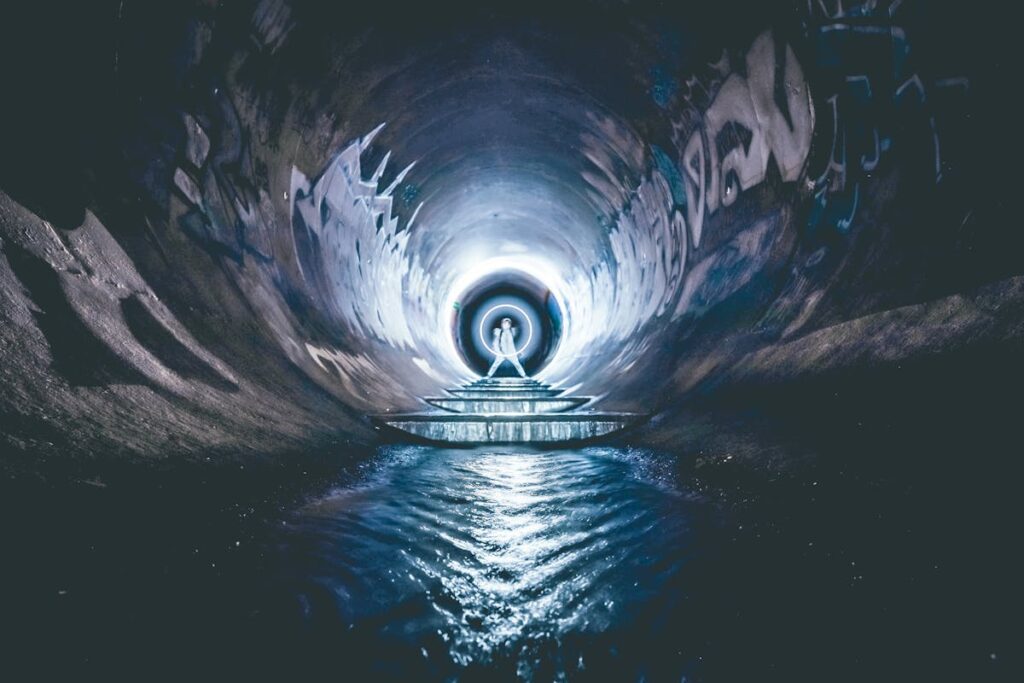Poor Drainage in Yard: How Water Log Affects Your Lawn
Your lawn may look like a green oasis, but lurking beneath could be a silent saboteur – poor drainage. While a well-manicured yard brings pride to homeowners, inadequate water management can turn that dream into a soggy nightmare.
From waterlogged soil that suffocates grass roots to erosion that carves channels through your landscape, drainage issues can wreak havoc on your outdoor space. Whether it’s standing water after a light rain or a backyard that never seems to dry out, these are telltale signs of a deeper problem.
In this guide, we’ll dive into the world of yard drainage, exploring how water mismanagement affects your lawn and property. We’ll uncover the sneaky signs of poor drainage, its far-reaching impacts, and most importantly, how to reclaim your yard from the grip of excess water. Get ready to transform your soggy situation into a thriving, healthy landscape.
The Impact of Poor Drainage on Your Landscape
Poor drainage in your yard can have a ripple effect of issues beyond just a soggy lawn. Understanding the implications can help you appreciate the importance of addressing improper lawn drainage promptly.
Root rot and plant death
Consistently waterlogged soil deprives plant roots of oxygen, leading to root rot. As roots decay, they can’t support the plant, resulting in wilting, yellowing leaves, and eventual plant death. Even hardy plants can succumb to prolonged wet conditions from poor drainage.
Soil compaction
Improper lawn drainage leads to soil compaction. Water saturation pushes out air pockets, making the soil dense and hard. Compacted soil restricts root growth, limiting access to nutrients and water, resulting in weak, shallow-rooted plants.
Increased pest and mosquito activity
Standing water from poor drainage creates ideal breeding grounds for mosquitoes and other pests. These insects pose health risks and make outdoor spaces less enjoyable. Soggy conditions also attract pests like slugs and snails, which damage plants.
Lawn disease and fungal growth
Excess moisture fosters fungal growth and lawn diseases like brown patch, dollar spot, and pythium root rot. These diseases spread quickly, causing unsightly brown patches and requiring extensive treatment.
Nutrient leaching
By addressing drainage issues in your landscape, you can prevent these harmful impacts and create a healthier, more resilient outdoor environment. Proper drainage is key to maintaining a vibrant, thriving landscape that can withstand various weather conditions and provide long-lasting beauty for your home.
How Water Log Damages Your Property Beyond the Lawn
While poor yard drainage immediately affects your landscape, its impact extends far beyond your grass and plants. Improper lawn drainage can cause significant damage to your property’s structures and hardscapes, leading to costly repairs if left unchecked.
Foundation issues
One of the most serious consequences of poor drainage in your yard is the potential for foundation damage. When water consistently pools around your home’s foundation due to improper lawn drainage, it can lead to a range of problems:
- Hydrostatic pressure buildup, causing cracks in foundation walls
- Soil expansion and contraction, leading to foundation settling or shifting
- Weakening of the foundation structure over time
These issues can result in uneven floors, stuck doors and windows, and even structural instability if not addressed promptly.
Basement flooding
Poor backyard drainage often contributes to basement flooding. As water accumulates in the soil around your home, it can seep through small cracks or porous areas in your foundation walls. This can lead to:
- Water damage to stored items and finished basement areas
- Mold and mildew growth, posing health risks
- Damage to electrical systems and appliances
- Increased humidity throughout your home
Regular basement flooding can significantly decrease your property value and create ongoing maintenance challenges.
Hardscape damage (driveways, patios, walkways)
Water logging due to poor yard drainage can cause extensive damage to your property’s hardscapes:
- Cracking and heaving of concrete driveways and walkways
- Settling and unevenness in paver patios
- Erosion underneath hardscapes, leading to instability
- Staining and discoloration of stone or concrete surfaces
These issues not only affect the aesthetics of your outdoor spaces but can also create safety hazards and require costly repairs or replacements.
Common Causes of Poor Yard Drainage
Understanding the root causes is crucial for effectively addressing poor drainage in your yard. Here are the primary factors that contribute to bad lawn drainage:
Improper grading and sloping
Your yard should have a gentle slope away from your home’s foundation, allowing water to flow naturally away from structures. Issues arise when:
- The ground is too flat, causing water to pool
- The yard slopes towards your home, directing water to the foundation
- There are low spots or depressions that collect water
Compacted soil
Soil compaction is a frequent culprit in poor yard drainage. Compacted soil:
- Has fewer air spaces, reducing its ability to absorb water.
- Creates a hard surface that water runs off rather than penetrates.
- Restricts root growth, leading to weaker plants and more runoff.
Compaction often occurs in high-traffic areas or where heavy machinery has been used, but it can also result from prolonged waterlogging.
High clay content in soil
Soils with high clay content are prone to drainage problems. Clay soil:
- Retains water for long periods due to its dense structure.
- Expands when wet and contracts when dry, leading to soil cracking.
- Has poor permeability, causing water to pool on the surface.
While clay soil can be beneficial for some plants, it often requires amendments to improve drainage.
Inadequate or clogged gutters and downspouts
Your home’s gutter system plays a crucial role in yard drainage. Problems occur when:
- Gutters are too small to handle the volume of water from your roof.
- Downspouts are missing or incorrectly positioned.
- Gutters or downspouts become clogged with leaves and debris.
These issues can cause water to overflow and pool around your foundation, contributing to poor drainage in your yard.
Excessive impervious surfaces
As properties develop, the increase in impervious surfaces can lead to drainage issues:
- Driveways, patios, and walkways prevent water from naturally soaking into the ground.
- Large roof areas concentrate rainwater runoff into specific areas.
- Reduced green space limits the area available for natural water absorption.
Effective Yard Drainage Solutions to Combat Water Log
Before water damages turf, explore these yard‑drain options that match soil conditions. Addressing poor drainage in your yard requires a multi-faceted approach. Here are some proven solutions to help you tackle improper lawn drainage and create a healthier landscape:
French drains and underground drainage systems
French drains are an effective solution for poor backyard drainage. These systems consist of a perforated pipe surrounded by gravel, which collects and redirects excess water away from problem areas. Benefits include:
- Efficiently moving water away from your home’s foundation
- Reducing standing water in low spots
- Preventing soil erosion in sloped areas
Proper landscape grading and contouring
Correcting the grade of your landscape is crucial for improving yard drainage. This involves:
- Creating a gentle slope away from your home and structures
- Filling in low spots that collect water
- Designing swales (shallow ditches) to direct water flow
Rain gardens and bioswales
These eco-friendly solutions not only address poor yard drainage but also add beauty to your landscape:
- Rain gardens: Shallow depressions planted with water-loving native plants that absorb and filter runoff
- Bioswales: Longer, channel-like versions of rain gardens that move water while filtering pollutants
These features can handle large volumes of water, reduce runoff, and support local wildlife.
Permeable hardscaping materials
Replace impermeable surfaces with materials that allow water to seep through:
- Permeable pavers for driveways and walkways
- Gravel or crushed stone for paths and patios
- Porous asphalt or concrete for larger areas
These materials help reduce runoff, replenish groundwater, and minimize the impact of hardscaping on your yard’s drainage.
Aeration and soil amendments
Improving soil structure is key to addressing poor drainage in your yard:
- Regular aeration: Creates channels for water to penetrate compacted soil.
- Adding organic matter: Improves soil structure and water retention.
- Incorporating sand or gypsum: Helps break up clay soils for better drainage.
These techniques not only improve drainage but also enhance overall soil health, promoting stronger plant growth.
Preventing Water Log: Proactive Lawn Care Techniques
Addressing poor yard drainage isn’t just about reactive solutions, it’s also about proactive maintenance. You can often stop root rot if you plan your drain layout before re‑planting. Here are key techniques to prevent water log and maintain proper lawn drainage.
Regular soil aeration
Aeration helps prevent soil compaction, a common cause of improper lawn drainage:
- Aim to aerate your lawn annually, especially in high-traffic areas
- Use a core aerator to remove small plugs of soil, creating channels for water and air
- Follow aeration with overseeding to promote denser, healthier turf
Proper watering practices
Overwatering can contribute to poor drainage in your yard:
- Water deeply but less frequently to encourage deep root growth
- Use a rain gauge or smart irrigation system to avoid overwatering
- Water early in the morning to reduce evaporation and allow proper absorption
Gutter and downspout maintenance
Well-maintained gutters are crucial for preventing poor backyard drainage:
- Clean gutters at least twice a year, more if you have many trees
- Ensure downspouts extend at least 4-6 feet away from your foundation
- Consider installing gutter guards to reduce debris buildup
Strategic plant selection for problem areas
Choose plants that thrive in your yard’s specific conditions:
- For wet areas, opt for moisture-loving plants like ferns, hostas, or certain tree species
- Use deep-rooted plants on slopes to prevent erosion
- Consider native species that are adapted to your local climate and soil conditions
Frequently Asked Questions
- What can I do about poor drainage in my yard?
To tackle poor drainage in your yard, start by improving the soil structure, redirecting water flow, and enhancing landscape grading. Regular maintenance and proactive steps like aerating the soil and adjusting your watering habits will keep your yard in top shape and free from waterlogging.
- What are three methods of improving poor drainage?
One effective method is to install French drains, which use a perforated pipe surrounded by gravel to collect and redirect excess water away from problem areas.
Another approach is to ensure proper landscape grading, creating a gentle slope away from your home to guide water flow and prevent pooling.
Additionally, consider creating rain gardens filled with water-loving plants that absorb and filter runoff, turning wet spots into beautiful, functional landscape features.
- What is considered poor draining soil?
Poor draining soil is often dense and compact, typically high in clay content. This type of soil holds onto water for too long, leading to waterlogged conditions that can suffocate plant roots and stunt their growth.
- What are drainage advantages and disadvantages?
Good drainage comes with several perks, like healthier plants, less soil erosion, and protecting your foundation from water damage. On the flip side, setting up a proper drainage system can be costly and requires effort to maintain, but the benefits of a thriving, beautiful yard make it worth it.
Final Thoughts
Remember that poor yard drainage isn’t just an inconvenience; it’s a serious issue that can lead to significant property damage and landscape deterioration if left unchecked. From foundation problems to plant death, the consequences of neglecting drainage issues can be costly and long-lasting.
While many drainage solutions can be DIY projects, complex issues often benefit from professional assessment and implementation. Landscape experts can provide tailored solutions that address your specific drainage challenges, ensuring long-term success and peace of mind.
Investing in proper drainage is an investment in the health and longevity of your entire property. By taking proactive steps to improve and maintain good drainage, you’re not just solving a problem – you’re enhancing the beauty, functionality, and value of your outdoor living space for years to come.
Contact Ware Landscaping at (312) 471-9547 for a complimentary assessment. We’re ready to collaborate with you to find the best solution for your drainage needs!

